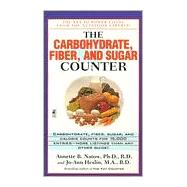You don't have to be an elite athlete to eat like one -- their peak performance secret is carbohydrates, the pure energy source that keeps active people going
strong. In this one-of-a-kind nutrition counter, discover the surprising benefits of carboh








